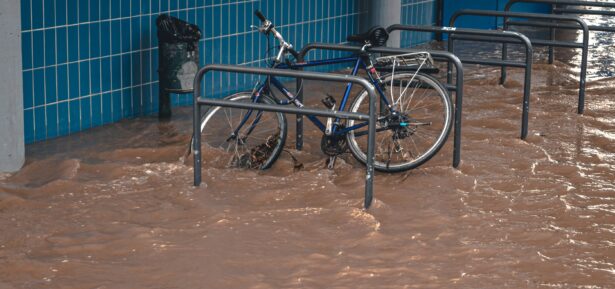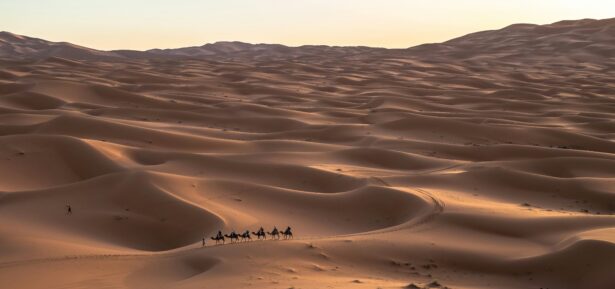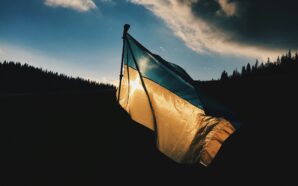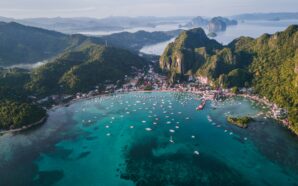Hardly thirty minutes have passed after the 7.7 earthquake that hit Pakistan when residents of the Pakistani coastal town Gwadar were subjected to an amazing and unique sight – they saw with their own eyes how a sizable island emerged from the sea just over one kilometer from the town’s shores Tuesday.
Shocking Sight
Local journalist Bahram Baloch was shocked, to say the least, when he was informed about the emerging island through a text message sent to him by a friend.
“It said a hill has appeared outside my house,” he recounted. “I stepped out, and was flabbergasted. I could see this grey, dome-shaped body in the distance, like a giant whale swimming near the surface. Hundreds of people had gathered to watch it in disbelief.”
Older residents of Gwadar, however, said that the new land formation the town saw had happened before and seeing it again now gave them a sense of déjà vu. 60-year-old Ali Mohammad and 57-year-old Azeem Baloch told reporters that a strong earthquake way back in 1968 had resulted in an appearance of a new island at the same area where the current island emerged but after a year, it just vanished.
Rocks, Mud and Gas
Mr. Baloch, along with some of his friends, boarded a boat Wednesday morning to investigate the new island and to take pictures of it.
He described it as an “an oval shaped island which is about 250ft to 300ft (76-91m) in length, and about 60 to 70ft above the water”.
The island’s surface is rough, much of it is muddy while the rest is made up of fine to coarse-grained sand, but there is a part which is of solid rock and that was where the local journalist and his companions landed.
Mr. Baloch added that they saw dead fish on the island’s surface and one side of the island; they could hear hissing sounds of escaping gas. To investigate if there is really flammable gas in the area, his friends lighted some fissures and saw that these lighted up.
“We put the fire out in the end, but it was quite a hassle. Not even the water could kill it, unless one poured buckets over it,” he stated.
Might Not Be Permanent
Seismologists who saw the newly emerged island suspect it might be temporary and resulted from a “mud volcano” or the jetting up of mud, sand, and water from the seabed gushing up into the surface, an effect brought about by the violent temblor that shook up and caused much pressure under the ocean floor.
John Ambruster, a seismologist from Lamont Doherty Earth Observatory at Columbia University, explained the said process calling it the “liquefaction” of sand and mud layers adding that these usually happen after any earthquake though stronger earthquakes of magnitudes 7 to 8 have the tendency to make islands rise suddenly.
Researchers from the United States Geological Survey are also doing their own investigation about the land formation but have not come up with their own explanation as to how the said island came into being.
Pink Diamond to Sell for $60 Million
-
In a significant escalation of the ongoing dispute over misinformation, Brazil Supreme Court Justice Alexandre de Moraes has initiated...
-
Mumbai Takes the Throne for the Most Billionaires in Asia In a historic milestone, Mumbai has overtaken Beijing to...
-
French President Emmanuel Macron emphasized the need for Western powers to remain vigilant in the face of the Ukraine...
-
The Philippines has strongly denounced what it described as “unprovoked acts of coercion and dangerous maneuvers” by China in...
-
As Moscow Prepares to Bid Adieu, Navalny’s Funeral Raises Uncertainties and International Allegations The spokesperson for Alexei Navalny has...
-
On the two-year anniversary of the ongoing conflict between Ukraine and Russia, there is much to reflect upon. Since...
-
The Office for National Statistics (ONS) released official figures on Wednesday, revealing that the United Kingdom posted a record...
-
Greece has become the first Christian Orthodox-majority country to legalize same-sex marriage, marking a significant step forward for LGBTQ+...
-
Massive Deflation in China as CPI Plummets by 0.8% China faces mounting challenges as its consumer prices spiral deeper...
-
3 Days of Consecutive Snowing Has Wreaked Havoc on Transportation As China prepares to celebrate the Lunar New Year,...
-
Rapid Growth in Electric Cars Propels China to The Forefront of Global Vehicle Exports China has surpassed Japan as...
-
Pakistan’s Political Landscape Suffers a Shift Following Khan’s Sentencing Former Pakistani Prime Minister Imran Khan and his wife, Bushra...



















